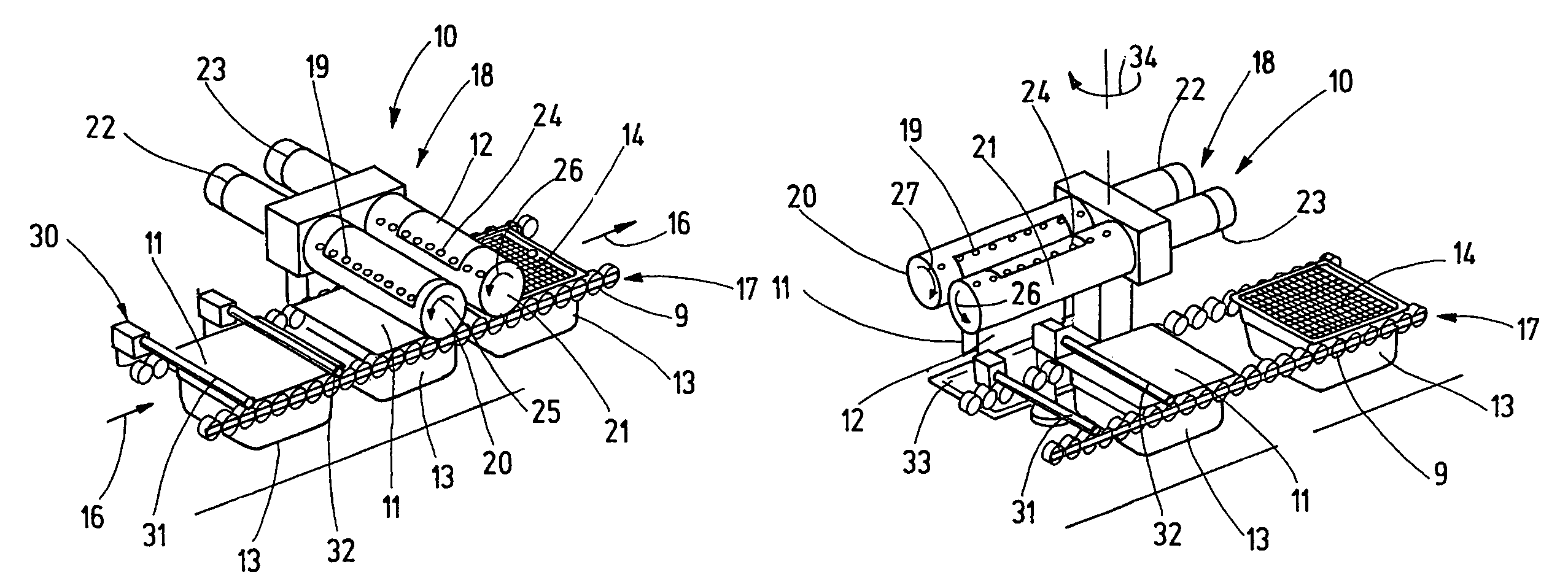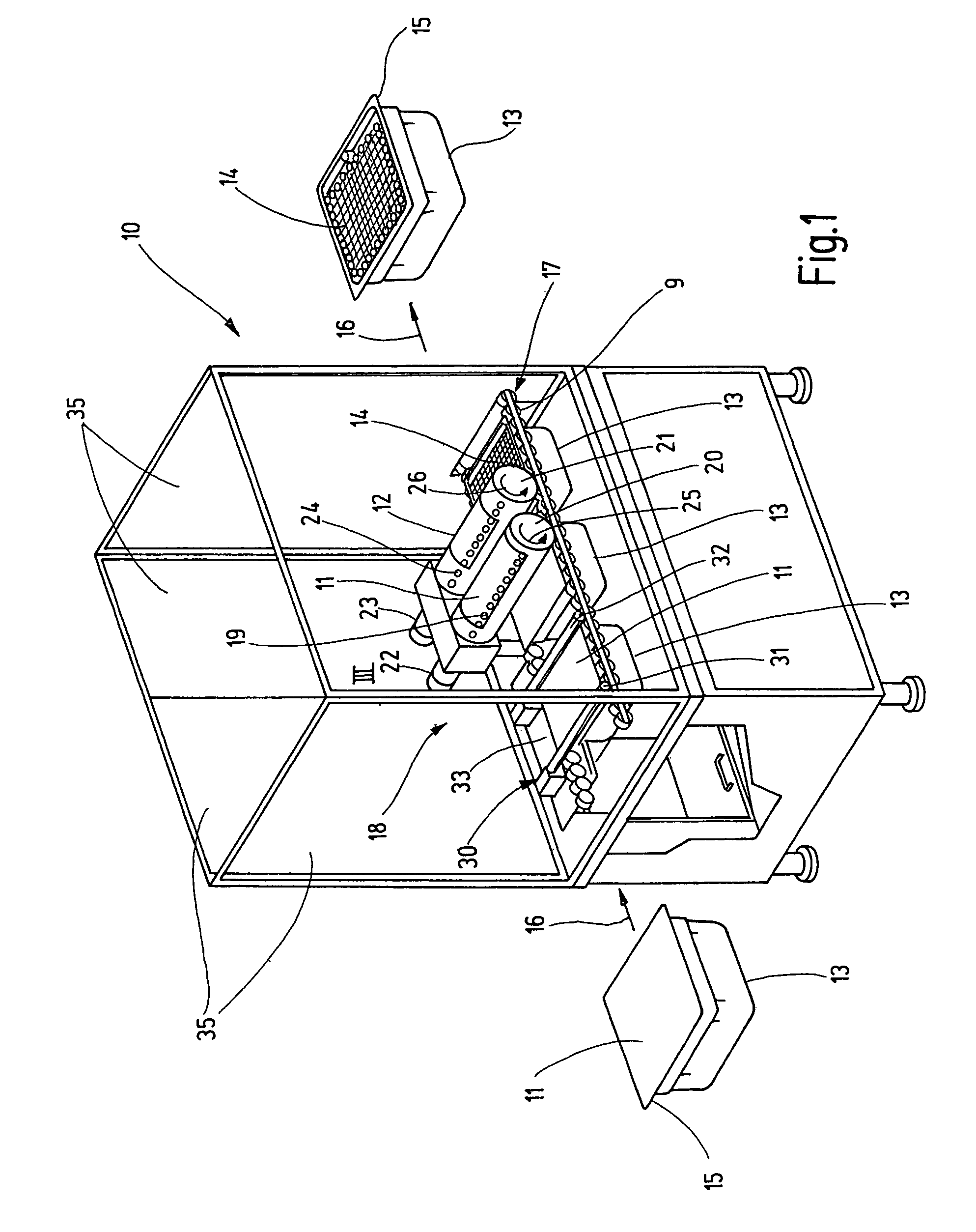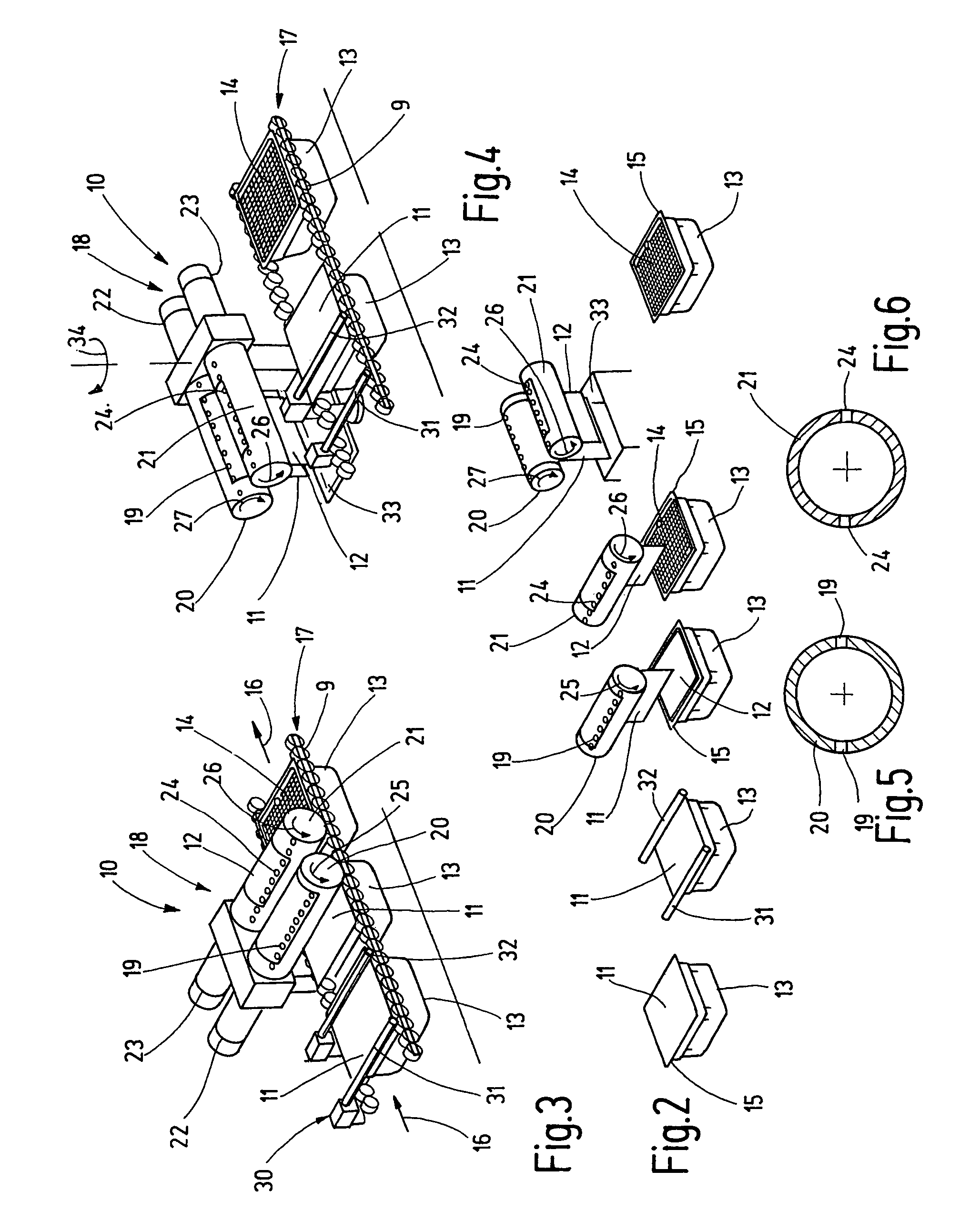Method and device for removing a cover from a storage box
a storage box and cover technology, applied in the field of storage box cover removal, can solve the problems of complex and laborious devices of this type, not always ensuring that the top cover is securely gripped, and requiring a large amount of space, so as to reduce the adhesive strength of the cover, simple design, and operation reliability.
- Summary
- Abstract
- Description
- Claims
- Application Information
AI Technical Summary
Benefits of technology
Problems solved by technology
Method used
Image
Examples
Embodiment Construction
[0017]The drawing shows a device 10 designed for removing at least one cover 11 and 12 from individual storage boxes 13. These storage boxes 13 are preferably storage boxes which are filled with prefabricated disposable syringes 14 which have not yet been filled. They are positioned such that they hang in storage box 13, e.g., in a perforated tray which sits loosely on a ledge projecting circumferentially from the side walls of storage box 13. After being filled, storage boxes 13 are closed with a lid-like cover 11 which is joined via sealing with circumferential edge 15 of storage box 13. Cover 11 and this seal along edge 15 must be germ-proof, whereby cover 11 must still be detachable from edge 15 without cover 11 tearing or splitting and leaving parts of it behind. In addition, cover 11 must be designed such that disposable syringes 14 can be sterilized through it, usually using steam-based or gaseous sterilizing means. Each storage box 13 is often provided with a second cover 12...
PUM
| Property | Measurement | Unit |
|---|---|---|
| adhesive strength | aaaaa | aaaaa |
| resistance | aaaaa | aaaaa |
| rotation | aaaaa | aaaaa |
Abstract
Description
Claims
Application Information
 Login to View More
Login to View More - R&D
- Intellectual Property
- Life Sciences
- Materials
- Tech Scout
- Unparalleled Data Quality
- Higher Quality Content
- 60% Fewer Hallucinations
Browse by: Latest US Patents, China's latest patents, Technical Efficacy Thesaurus, Application Domain, Technology Topic, Popular Technical Reports.
© 2025 PatSnap. All rights reserved.Legal|Privacy policy|Modern Slavery Act Transparency Statement|Sitemap|About US| Contact US: help@patsnap.com



